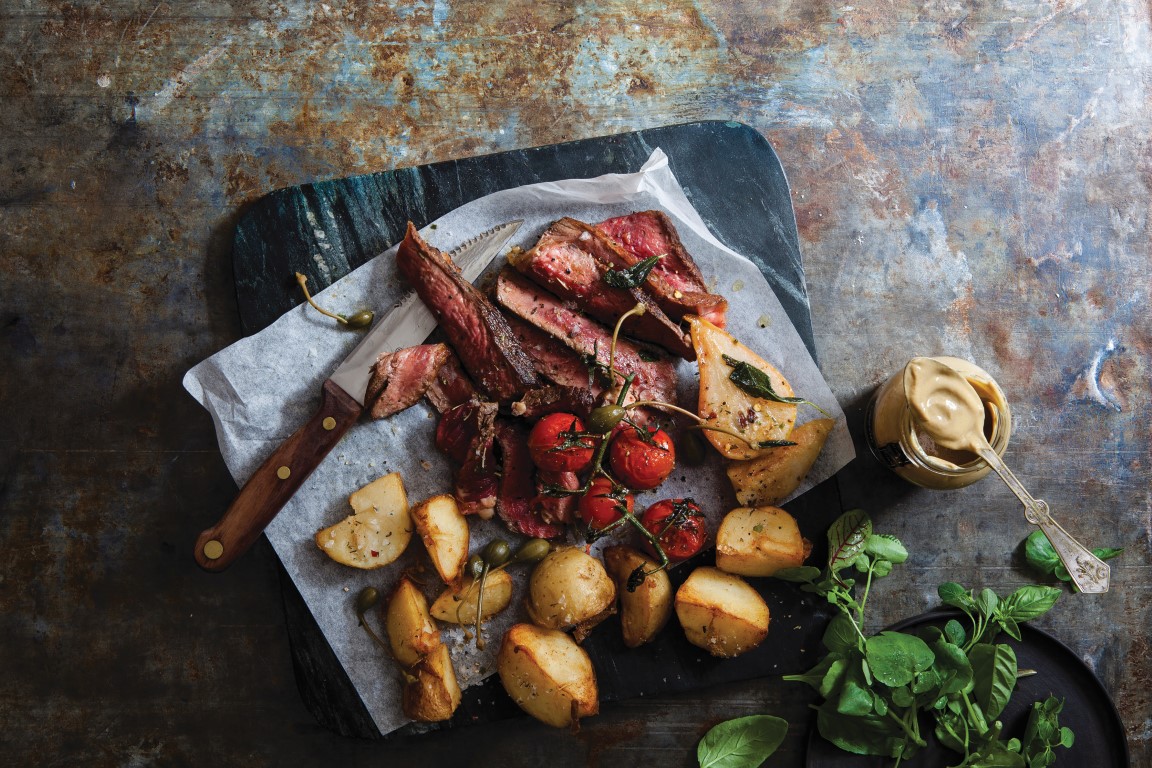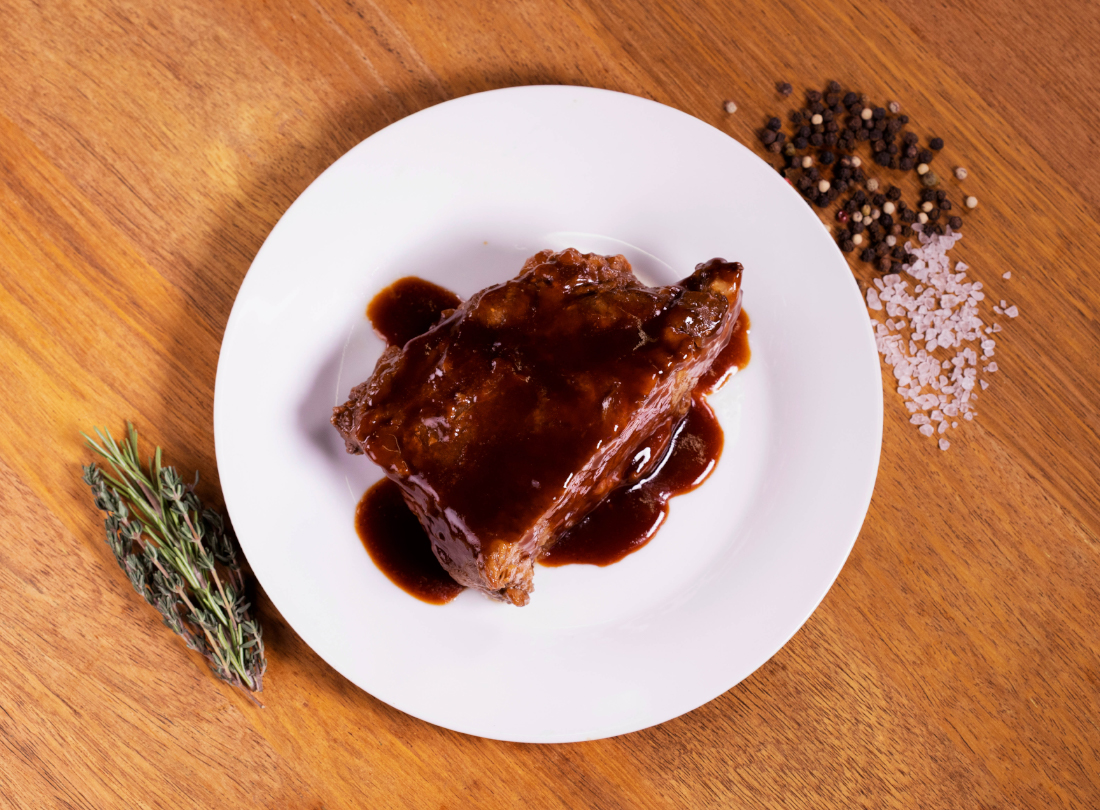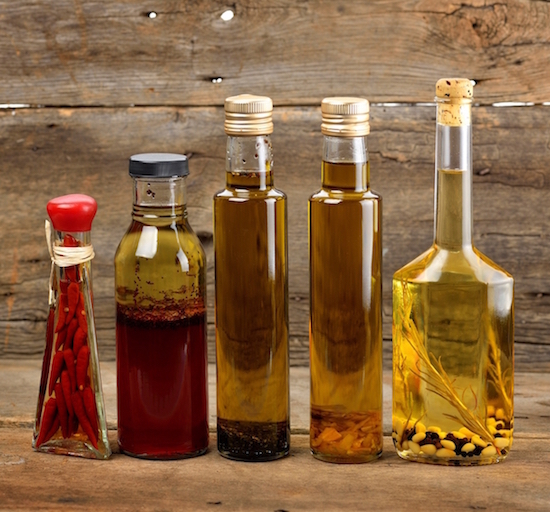

Every delicious marinade needs 3 basic elements – oil, acid and flavouring. Once you understand the basic ratios and timeframes that go into making beef marinades, you’ll never need to look at a recipe again.
Customise your recipes based on the flavours you want, the side dishes you’re pairing the beef with and your mood. Tip: you will want about ½ a cup of marinade for every 500 grams of meat. These marinade ratio tips work equally as well for pork, chicken and lamb… but as you know we’re beef aficionados!
Step 1: Start your marinade with oil
Your marinade should be at least ½ oil. Why? Because oil is a great flavour carrier, helps the meat to cook evenly and emulsifies the marinade into a thick sauce that will easily coat the meat. If you want an oil that won’t add flavour, go for something neutral like canola – if you want flavour, go for olive oil, sesame oil or even an infused oil (like you can see in the picture above).
Step 2: Add an acid – but don’t go too crazy
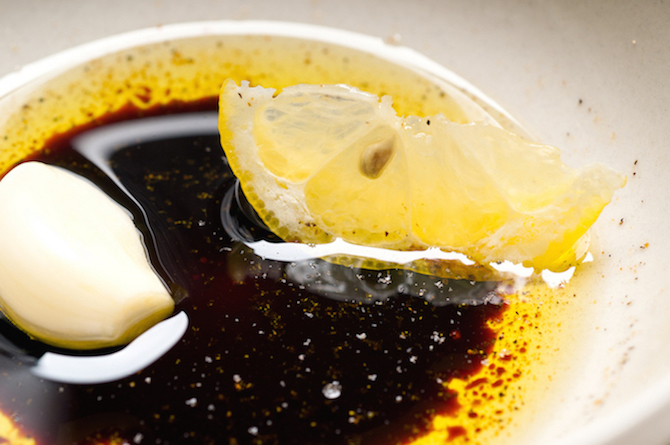
Acid helps to tenderise the connective tissues in the meat. You need to be careful that you don’t add too much acid (or marinade the meat for too long in an acid-rich marinade), because this can give the meat a tough and chalky texture. We recommend that you make about ¼ of your marinade an acid.
Which acids can you use? It really depends on how you want to the marinade to taste. You could use citrus fruit juice, any kind of vinegar (balsamic, apple cider, red wine, etc.), wine, beer, buttermilk, yoghurt or even pureed onions and garlic. A common favourite is the classic combination of olive oil and balsamic vinegar, which tastes particularly delicious with a juicy hanger steak.
Step 3: Add your flavours


It’s now time to choose your flavours. Basically, you can get creative and add whatever you think will taste good – start by checking out all your condiments, spices and herbs, and go from there. Some ideas? Consider using Worcestershire sauce, mustard, honey, maple syrup, soy sauce, tomato sauce, sriracha, miso paste, chilli paste, minced garlic, roughly chopped or pureed herbs or ground spices. You don’t need to limit yourself to one flavouring though – in fact, mixing and matching your flavours will add really nice depth to your marinade.
A delicious combo to go with a balsamic marinade is dijon mustard, minced garlic, rosemary, thyme and pepper.
There are no hard and fast rules when it comes to pairing your flavours… just get creative and be prepared to taste as you go!
Step 4: Something salty, something sweet
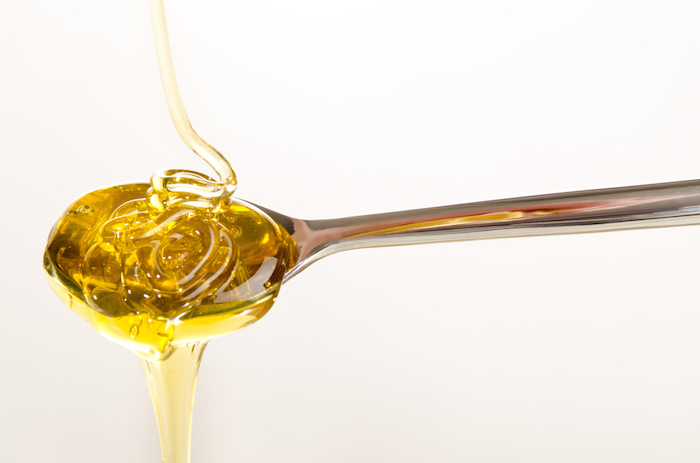

To balance out the flavour of your marinade, a general rule is to add something salty and something sweet. Sweeteners can include a dash of honey, brown sugar or maple syrup. Don’t go too crazy with the sweeteners though, as too much sugar will cause the beef to burn when you grill it. The aim isn’t to make the marinade taste sweet, it’s to make the flavour well-rounded.
Now that you have added oil, acid and flavouring, it’s time to taste your marinade and see how the flavour ratios are going. Make any adjustments as needed. If you find that you’ve made too much marinade, put some in a jar and store it in the fridge for next time.
Step 5: Marinate beef for 1-12 hours
Coat the beef in the marinade. You want as much of the beef surface as possible to be covered by the marinade, and the easiest way to do this is by using a resealable plastic bag. You can also use a baking dish or a shallow bowl, but make sure to flip the beef occasionally.
You need to marinade the beef for at least an hour, but ideally more. Don’t marinate for more than 12 hours, as the acids in the marinade will start to toughen the meat. If you plan to marinate the meat for any more than 2 hours, you should store it in the fridge. Just make sure that you return the beef to room temperature before you cook it!
Step 6: Pat beef down and start cooking!
Once your beef is ready for cooking, remove the beef from the marinade and pat it down with an (unscented!) paper towel. Make sure there are no bulky ingredients stuck to the meat, as these will burn when cooking. Want some tips for cooking your marinated beef perfectly? See our steak-cooking guide here.
Enjoy!
 Return to News
Return to News




